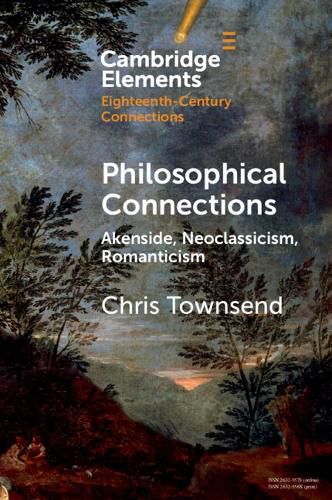Readings Newsletter
Become a Readings Member to make your shopping experience even easier.
Sign in or sign up for free!
You’re not far away from qualifying for FREE standard shipping within Australia
You’ve qualified for FREE standard shipping within Australia
The cart is loading…






Neoclassical and Romantic verse cultures are often assumed to sit in an oppositional relationship to one another, with the latter amounting to a hostile reaction against the former. But there are in fact a good deal of continuities between the two movements, ones that strike at the heart of the evolution of verse forms in the period. This Element proposes that the mid-eighteenth-century poet Mark Akenside, and his hugely influential Pleasures of Imagination, represent a case study in the deep connections between Neoclassicism and Romanticism. Akenside’s poem offers a vital illustration of how verse was a rival to philosophy in the period, offering a new perspective on philosophic problems of appearance, or how the world ‘seems to be’. What results from this is a poetic form of knowing: one that foregrounds feeling over fact, that connects Neoclassicism and Romanticism, and that Akenside called the imagination’s ‘pleasures’.
$9.00 standard shipping within Australia
FREE standard shipping within Australia for orders over $100.00
Express & International shipping calculated at checkout
Neoclassical and Romantic verse cultures are often assumed to sit in an oppositional relationship to one another, with the latter amounting to a hostile reaction against the former. But there are in fact a good deal of continuities between the two movements, ones that strike at the heart of the evolution of verse forms in the period. This Element proposes that the mid-eighteenth-century poet Mark Akenside, and his hugely influential Pleasures of Imagination, represent a case study in the deep connections between Neoclassicism and Romanticism. Akenside’s poem offers a vital illustration of how verse was a rival to philosophy in the period, offering a new perspective on philosophic problems of appearance, or how the world ‘seems to be’. What results from this is a poetic form of knowing: one that foregrounds feeling over fact, that connects Neoclassicism and Romanticism, and that Akenside called the imagination’s ‘pleasures’.